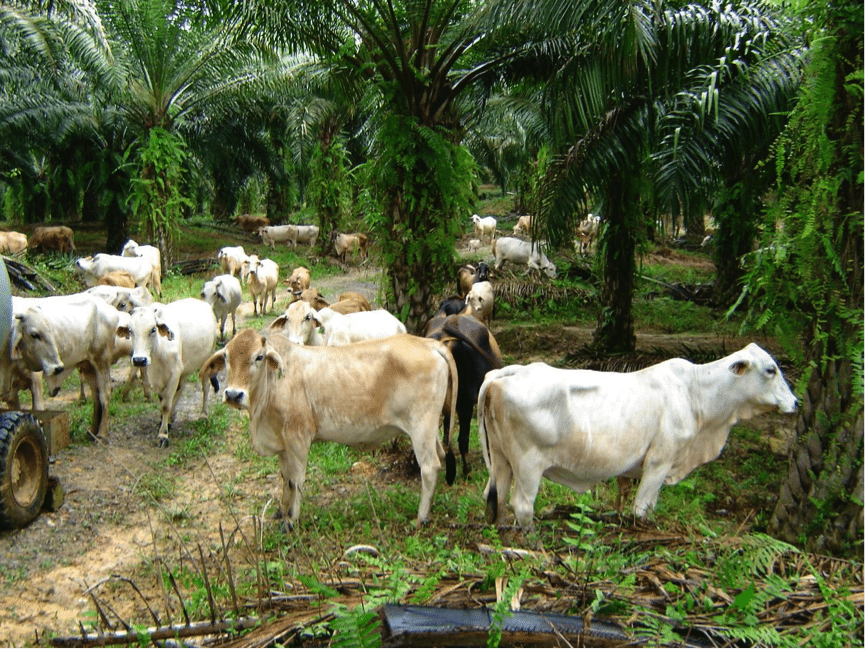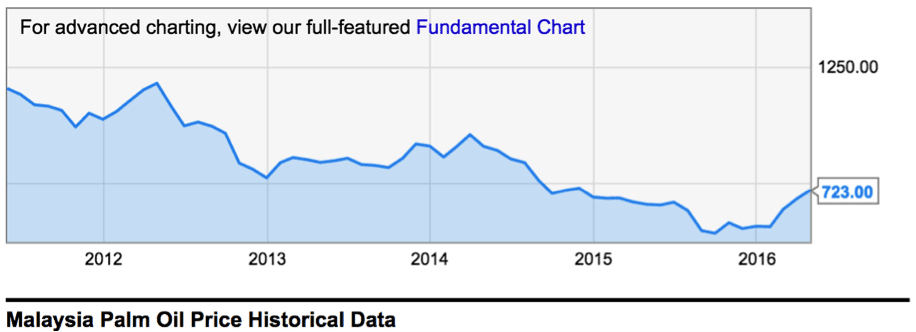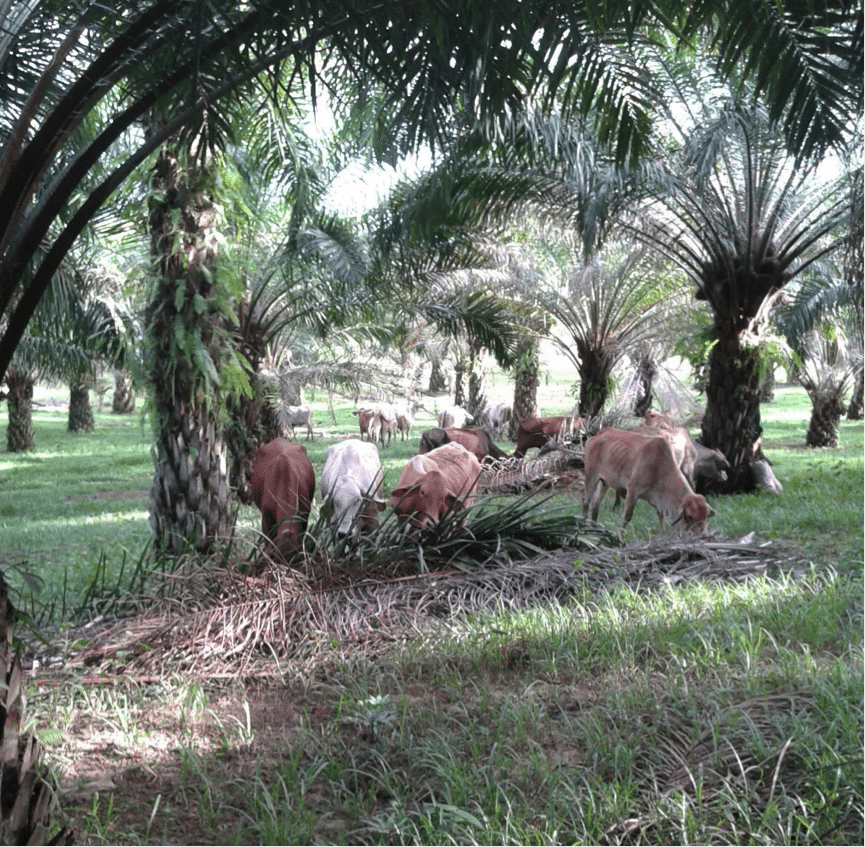The world is short of beef cattle while very few countries have “spare” land to substantially expand their breeding herds.
Brazil is about the only country with the resources to grow 10’s of millions of additional breeders. But that will take some years.
Meanwhile global demand continues to rise with China leading the charge. Australia’s herd has been decimated by drought and will take many years before it recovers to pre 2012 levels.
The US industry is in a similar situation.
Investors all over the globe have recognised this imbalance in the supply and demand fundamentals and are actively searching for a way to enter the beef industry but the conventional, low risk options like buying a property in Australia are limited and getting more expensive by the day.
The 15 million hectares of palm oil plantations in Malaysia and Indonesia offer a novel entry point for serious investors.
The main requirement for efficient cattle production is lots of cheap grass. Palm plantations could potentially provide these millions of hectares of grass growing under their trees for beef cattle production.
As of today, the grass and weeds under the trees are controlled using very expensive herbicide applied by very expensive manual labour.
Large cattle herds can be managed under oil palm trees but, just like any other business opportunity, there is both upside and downside for the investor to consider.
The positives :
- As the land is already owned for the tree crop business, that part of the investment is not required – the land component would normally represent about 50% of capital invested in a conventional beef cattle enterprise.
- Large scale commercial palm only grows about 5 degrees either side of the equator so there is plenty of rainfall providing green grass every day of the year. Zero drought risk.
- Both Indonesia and Malaysia are so short of cattle, they have difficulty even supplying the needs of their two major annual religious festivals. This means that prices for locally produced cattle are at a premium – in 2015 local bulls in East Kalimantan were selling for AUD$7 per kg during the Korban festival period.
- Management of cows under palms is by simple cell grazing systems using low cost electric fencing technologies which have been well proven and established in Asia and elsewhere. High stocking densities can be achieved.
The negatives :
- Finding a suitable business partner in a foreign country is always difficult, risky and time consuming.
- Foreign government policies are impossible to predict providing some additional risk although investment in import-replacing industries especially those related to domestic food production are usually given more favourable treatment by policy makers
- All palm plantations are large (minimum size about 5,000, maximum about 100,000 hectares) and therefore usually in remote locations leading to some logistical challenges. Managing and monitoring the beef herds in these remote locations also requires experienced and diligent management.
- In order to establish a satisfactory critical mass that will justify the costs of establishment, operations and monitoring, it would be necessary to aim for a herd of at least 5,000 breeders or more. The minimal entry level investment amount is therefore likely to be in the $10 million range.
- Plantation owners are very concerned that outsiders might steal their cattle if they leave them out grazing unattended overnight in these vast and remote areas. And this threat is real. The risk of theft varies greatly depending on the location of the plantation. Fortunately, there are many areas where the security risk to the cattle is minimal, manageable and acceptable.
Well, if the capital costs for entry are about half that of conventional beef enterprises (you only need to buy the cattle but not the land) and the income from the sale of progeny is roughly double the price received in Australia then why isn’t palm and cattle integration a major industry already?
- Palm plantation owners have (up until recently) made very handsome profits from their enterprises leading them to reject any complication like integrating cattle into their operations with potential for negative impacts on their primary investment.
- This fear is justified and confirmed because many of the earlier experiences of cattle integration were very poorly managed pioneering efforts and did in fact lead in many cases to negative impacts on the plantation.
- It was not until recently that the local cattle numbers in Indonesia and Malaysia began to dry up at an alarming rate leading to a dramatic rise in local prices. During the September 2015 Korban festival in East Kalimantan retail prices for 350 kg bulls was approximately AUD$7 per kg while the price in Sarawak, East Malaysia was about $5 per kg. At the same time, the GDP growth in both Malaysia and Indonesia has ensured that every year a larger proportion of the population can afford to invest in cattle purchases during the festival periods. This means that about 280 million people need more cattle every year just to satisfy this particular niche of peak demand.
What has changed recently to cause palm plantation owners to reconsider their opinion of this potentially dangerous integration option?
- The world price of palm oil has declined significantly – see price chart below
- The rapid rise in cattle prices makes this option look a lot more attractive than it did only 2 years ago.
- There is much more knowledge available in relation to managing cattle under palms in a way that actually enhances the production of the palm oil while the threats of damage to the environment or the trees can be reduced to zero.
- Malaysia is having great difficulty finding adequate supplies of plantation labour. When cattle graze the grass under the trees this reduces the labour (and herbicide) required to spray the long grass and weeds under the trees to facilitate efficient harvesting. Essentially, cattle are acting as biological lawn mowers saving labour and herbicide costs not to mention leaving feaces behind to improve soil fertility.
So how would the business be structured? A plantation buys their own cattle? Certainly possible but they will need plenty of help with their cattle management and integration processes. A cattle producer buys a palm plantation to run their own cows? I don’t think so. A joint venture where each partner contributes their strengths then work together to maximise the synergies of the model? Lots of challenges working all that out.
What could be better than creating a new production system where badly needed cattle are produced in a previously overlooked environment utilizing already fully productive land and selling the output into a desperately short market at historically high prices?
Will it be easy? No.
Could it be the beginning of a massive, new and successful business? Yes.
Finding the right partners will always be the greatest challenge.



